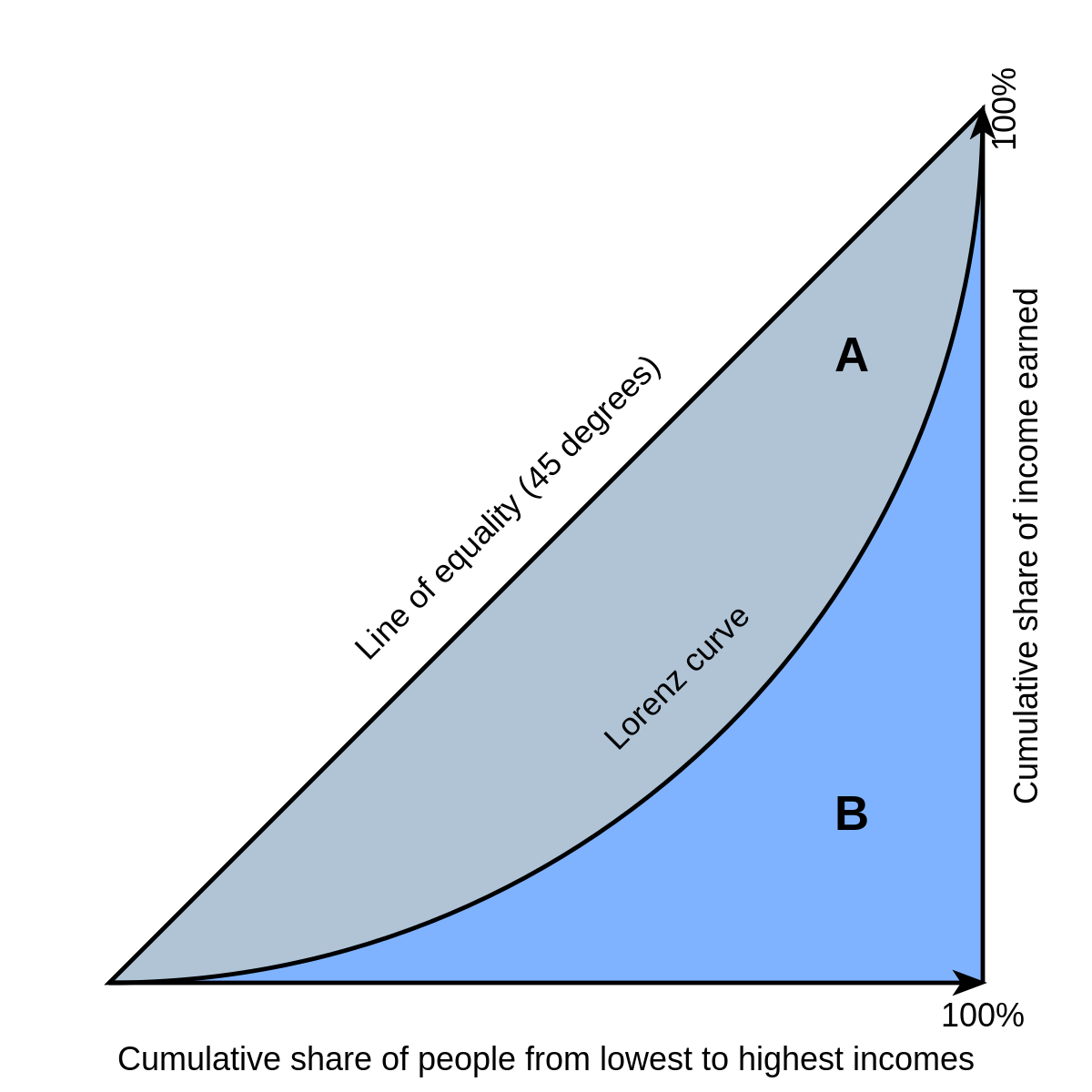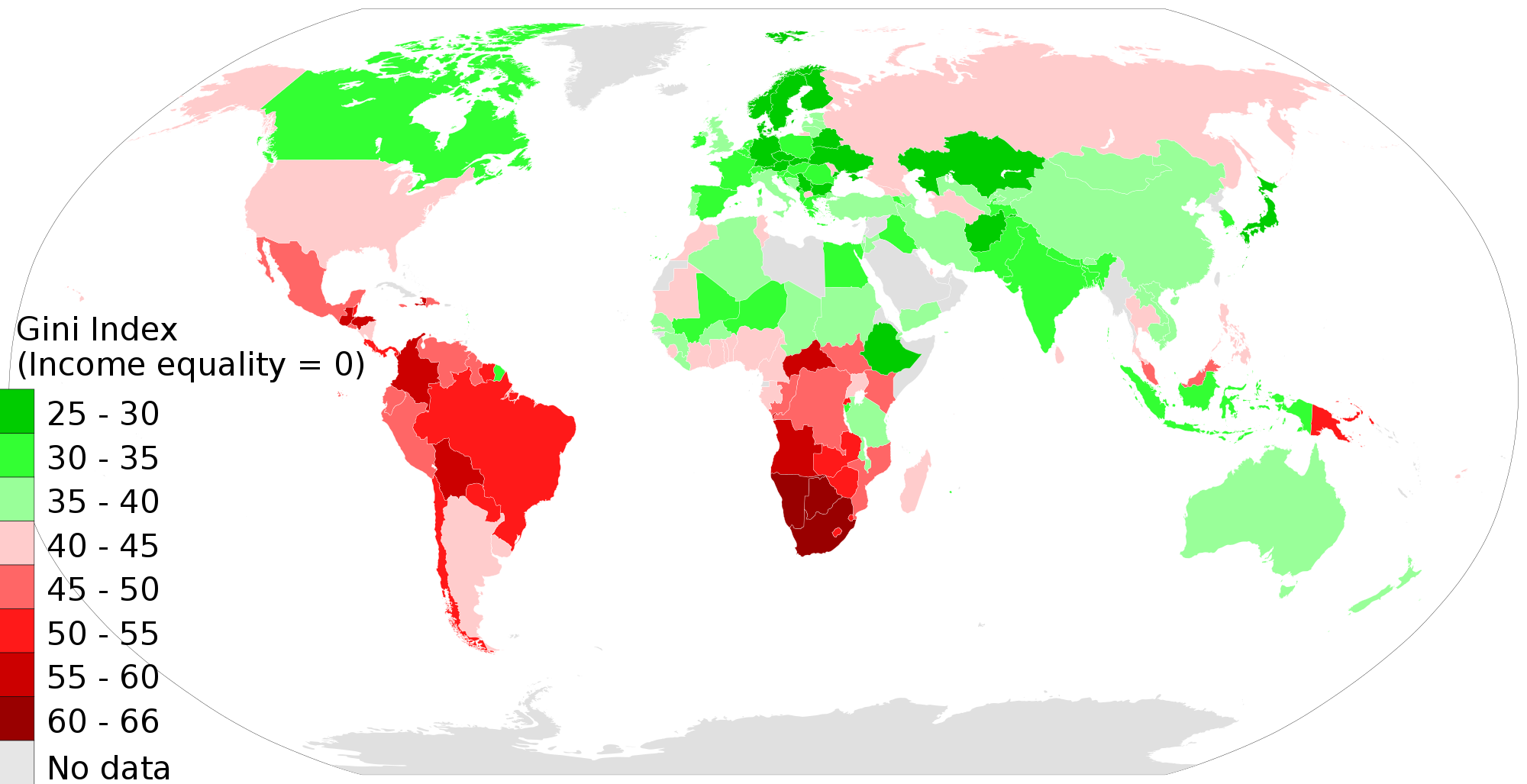ODI Explains: Why Inequality Matters
Economists are keenly interested in how income is distributed
among the population. Why? It is only fair to be concerned about inequality
because, the number of poor persons in country and the average quality of life
depends on the equal or unequal distribution of income. Also, though high
levels of inequality may lead to growth as some stages of development (see
Kuznet’s hypothesis), high inequality tends to be tricky for the economy at
other times.
What then is inequality? Whenever there exists a disproportionate
distribution of total national income among households, there is inequality. In
most cases, the share of income attributed to the rich in a typical country is
far greater than the share attributed to poor segments of the population. Needless
to say that inequality of income is observable in every country of the world, developed
and developing countries alike. However, the extent of inequality differs from
country to country. For the most part, higher observable inequality in
developing countries stems from differences in the amount of income derived
from ownership of property as well as differences in earned income.
How is inequality measured? The extent of income inequality in a
society is measured by estimating its social welfare function, the outcome of
which results from the interaction of per capita income, absolute poverty and
an index of inequality. While the level of per capita income tends to have a
positive effect on welfare, both inequality and absolute poverty negatively
affect welfare. There are two common measures of income inequality based on size
distribution of income – Lorenz curve and Gini coefficient. Within the
framework of the size distribution of income, individuals or households and the
total incomes received by them are considered. It disregards locational as well
as occupational sources of incomes earned and focuses on the amount of incomes
received. The Lorenz curve and Gini coefficient are drawn out and computed
based on this personal or size distribution of income.
A Lorenz curve shows the actual relationship between the
percentage of income recipients and the percentage of total income received
within a given period, usually a year. The plot shows the cumulative
percentages of total income received against the cumulative percentages of
recipients, starting with the poorest household/individual. As a rule of thumb,
the greater the curvature of the Lorenz curve the greater will be the relative
degree of inequality.
There are four basic steps to the construction of a Lorenz curve.
First, we rank all individuals or households in a country by their income
level, from the poorest to the richest. Secondly, we divide all individuals or
households into five (5) groups20 per cent in each [or ten (10) groups 10 per
cent in each], then calculate income of each group and express it as percentage
of GDP. Next, we plot the shares of GDP received by these groups cumulatively
against 100 per cent of the population. Finally, the Lorenz curve emerges when
we connect all points on the chart. A linear Lorenz curve connotes an equal
distribution of income. When comparing inequality levels across countries, the
country whose Lorenz curve is farthest from the line of equality is the most
unequal in its income distribution.
Gini coefficient is the area between a Lorenz curve and the line
of absolute equality expressed as a percentage of the triangle under the line. As
an aggregate measure of inequality, its value varies between 0 [perfect income
equality] and [perfect income inequality]. If we are set about comparing income
inequality among many countries, Gini coefficient is a more convenient
alternative than the Lorenz curve. Using the Gini coefficient, one could also
examine inequality trends in a country over a period of time.
According to Todaro and Smith, there are four (4) desirable properties of a measure of inequality, which the Gini coefficient satisfies comfortably. First is the anonymity principle. Anonymity here implies that measures of inequality should not be dependent on the nature of the individuals who are either rich or poor. It should not matter whether the individuals across the distribution are industrious or lethargic, moral or immoral. A second desirable property is scale independence. A good measure of inequality need not depend on the size of the economy being considered, for instance whether the economy under study is rich or poor on the average. Otherwise stated, a measure of inequality should be principally concerned about the dispersion and not the magnitude of income.
Thirdly, for a measure of inequality to be reliable and widely
applicable to various country contexts, it should not rely on the number of
income recipients (i.e. population independence). For instance, the economy of
India should be considered no more or less equal than the economy of Haiti
simply because India has a greater population than Haiti. Lastly, a good
measure of inequality such as the Gini coefficient is based on the transfer
principle. According to the transfer principle, assuming all other incomes are
held constant, if there are moderate transfers of income from a richer person
to poorer person, the resulting income distribution is more equal.
There is no consensus in empirical literature
on the effect of inequality of economic growth across countries. According to
the Nobel Laureate, Simon Kuznet, as a country develops inequality would first
rise then later fall. Kuznet’s inequality-growth hypothesis posits that as a
country’s industries achieve economic growth, the gap between the rich and poor
first widens and then gradually narrows. This hypothesis suggests that
increased inequality is a necessary condition for accelerating economic growth.
On the other hand, studies based on data collected by the World Bank state
otherwise, that income inequality adversely affects economic growth. The latter
results are most instructive for economies of developing countries.
There are certainly costs and benefits to inequality.
Fundamentally, a moderate level of inequality is required to promote economic
efficiency in any human society. A phenomenon of perfect equality, with no opportunity
for private profits and characterised by minimal differences in wages and
salaries, creates inefficiencies. Equality deprives individuals of the
incentives for entrepreneurship and diligent labour. For example, sheer
socialist’s wage equalization systems promote indiscipline and low initiative
among workers, poor quality of output, sluggish technical progress and economic
growth.
On the other end, high inequality has adverse effects on quality
of life. Amongst other things high inequality threatens economic stability, induces
higher incidence of poverty, limits progress in education and health, increases
social problems – crime and conflict, triggers political instability, discourages
foreign investment. Notably, countries with higher inequality are characterised
by low human capital accumulation (via education), higher fertility rates,
considerable levels of socio-political instability and poor institutions.
Can and do individuals or households move up the income
distribution? Yes, they can and they do. The more economically mobile a country
is, the better the quality of life. Economic
mobility refers to the movement of people from one part of the income
distribution to another. The higher is economic mobility, the more equal the income
distribution in the country. Wherever intergenerational economic mobility is
high, children may not likely be in the same part of income distribution with
their parents. Whole households could also move from one income group to another.
A country with a high degree of economic mobility tends to enjoy increased capacity
utilization and minimal class conflicts.
Several factors could contribute to
economic mobility in a country. Examples include: increased access to education
and health care, the nature of institutions, nature of marriages, extent of
ethnic or racial discrimination are a few such determinants of economic
mobility. On one hand, weak institutions, assortative mating practices and
presence of racial or ethnic discrimination are detrimental to economic mobility.
On the other hand, equal access to human capital development opportunities via
education and healthcare provision promotes access to economic opportunities
and enhances economic mobility.
In conclusion, it is pertinent to note these main ideas about
inequality:
• High income
does not necessarily mean equal distribution of income.
• The level of
development tends to affect the level of inequality.
• Too equal
income distribution promotes economic inefficiency.
• Too high
inequality produces socially undesirable outcomes.
• Decreasing
income inequality in developing countries is useful to accelerate economic and
human development.
• Pro-growth policies
may not inevitably lead to equal income distribution.
• Institutional
frameworks with mobility-enhancing policies provide the enabling environment
for human development.
The discussion continues…
References
Souboutina, T. P. (2004). Beyond Economic Growth: An
Introduction to Sustainable Development (2nd ed.). Washington, D.C.: The
World Bank.
Todaro, M. P., &
Smith, S. C. (2004). Economic Development (8th ed.). Delhi: Pearson
Education Singapore.








Comments